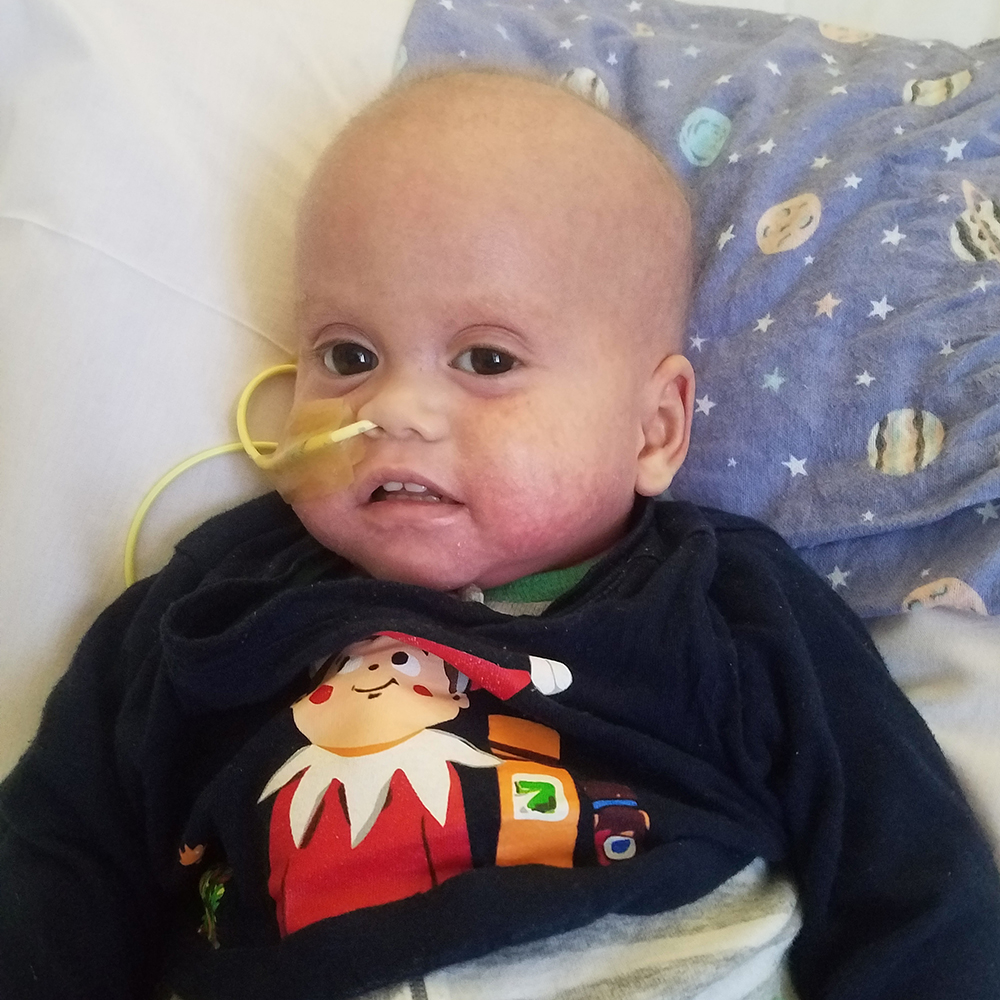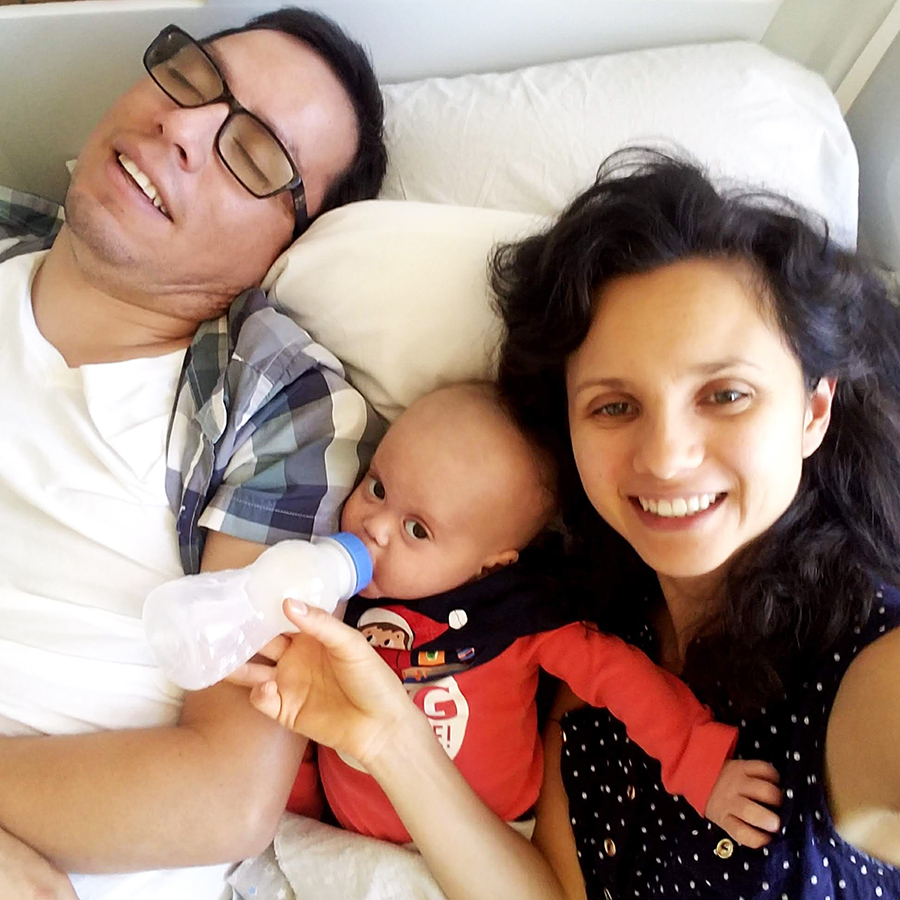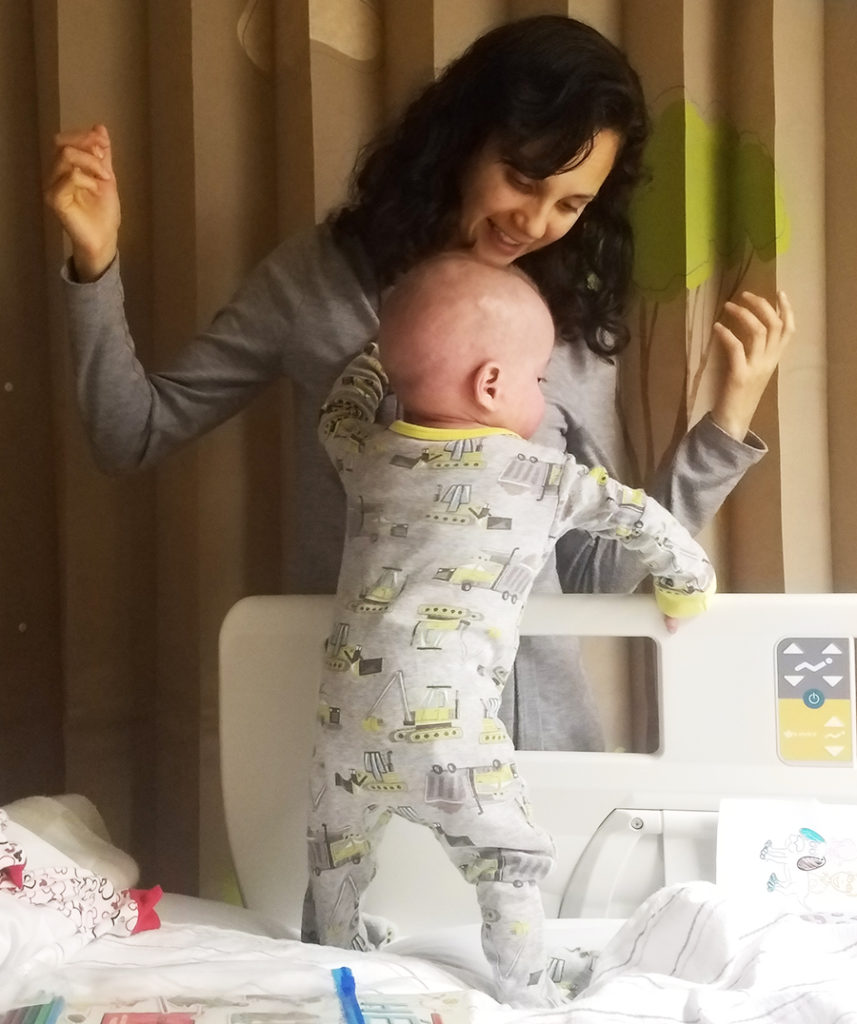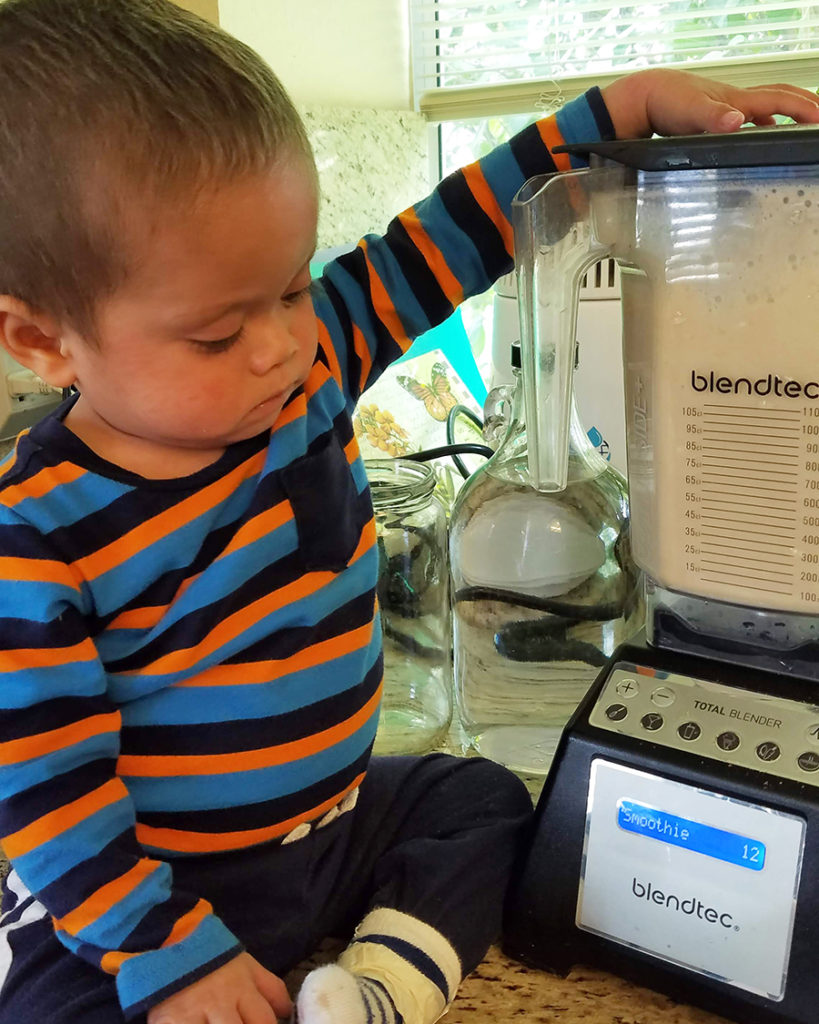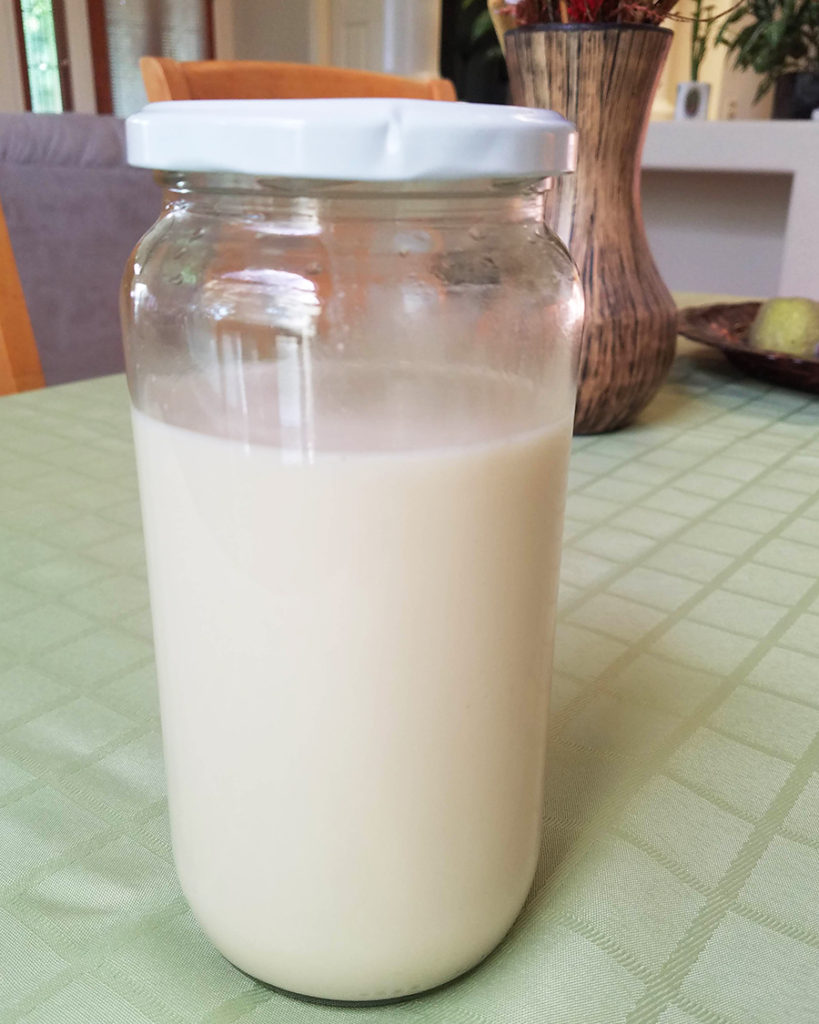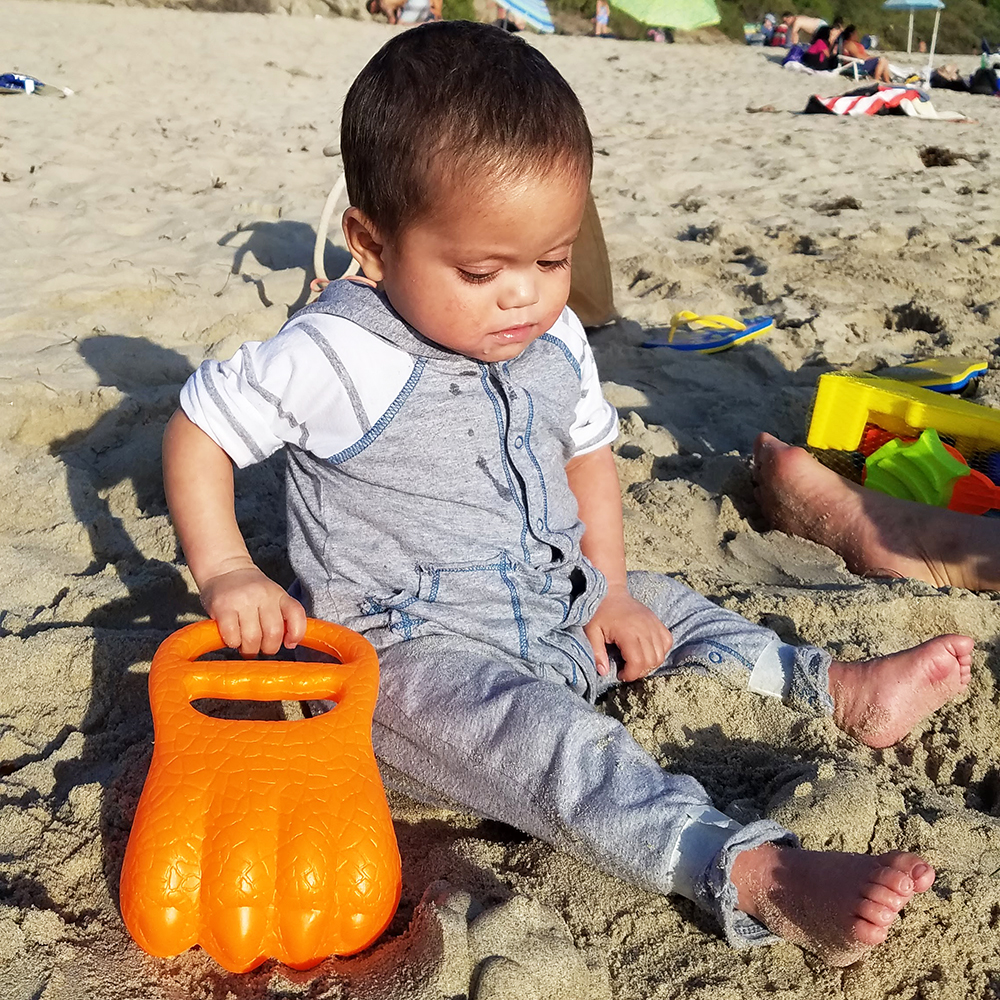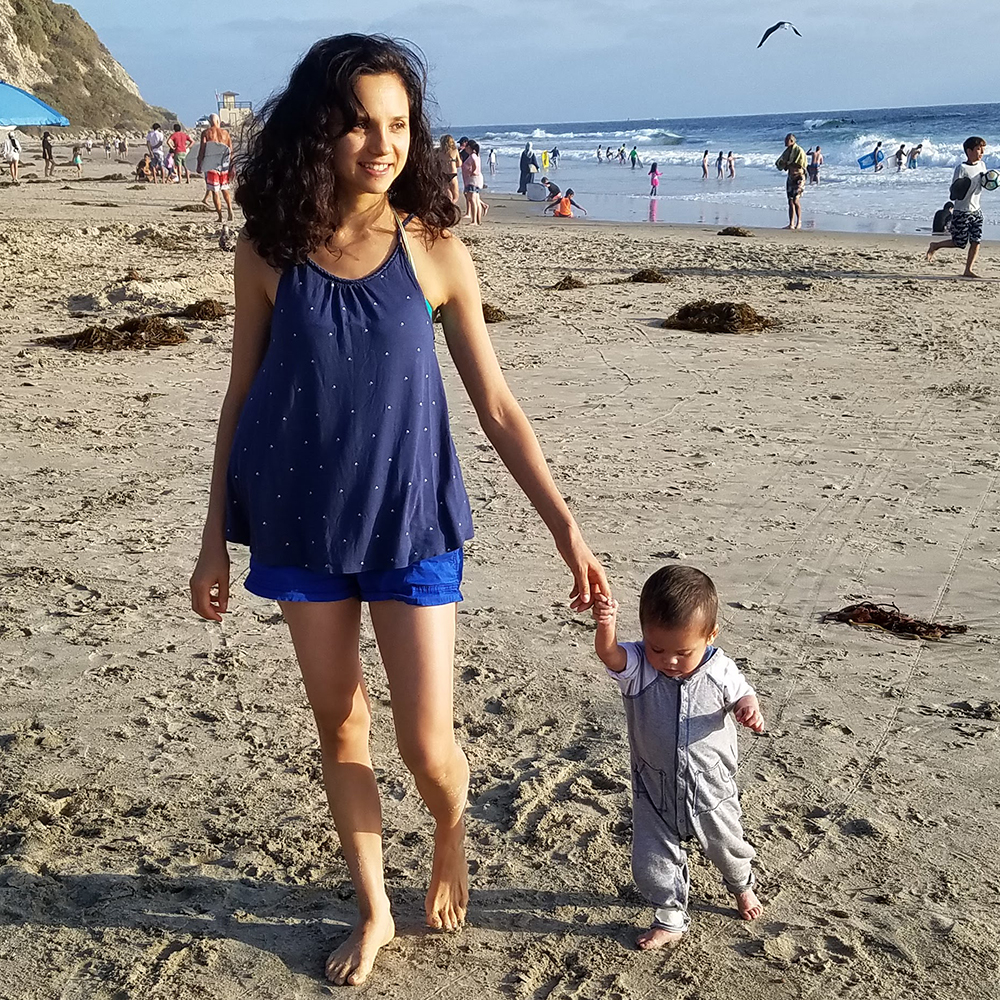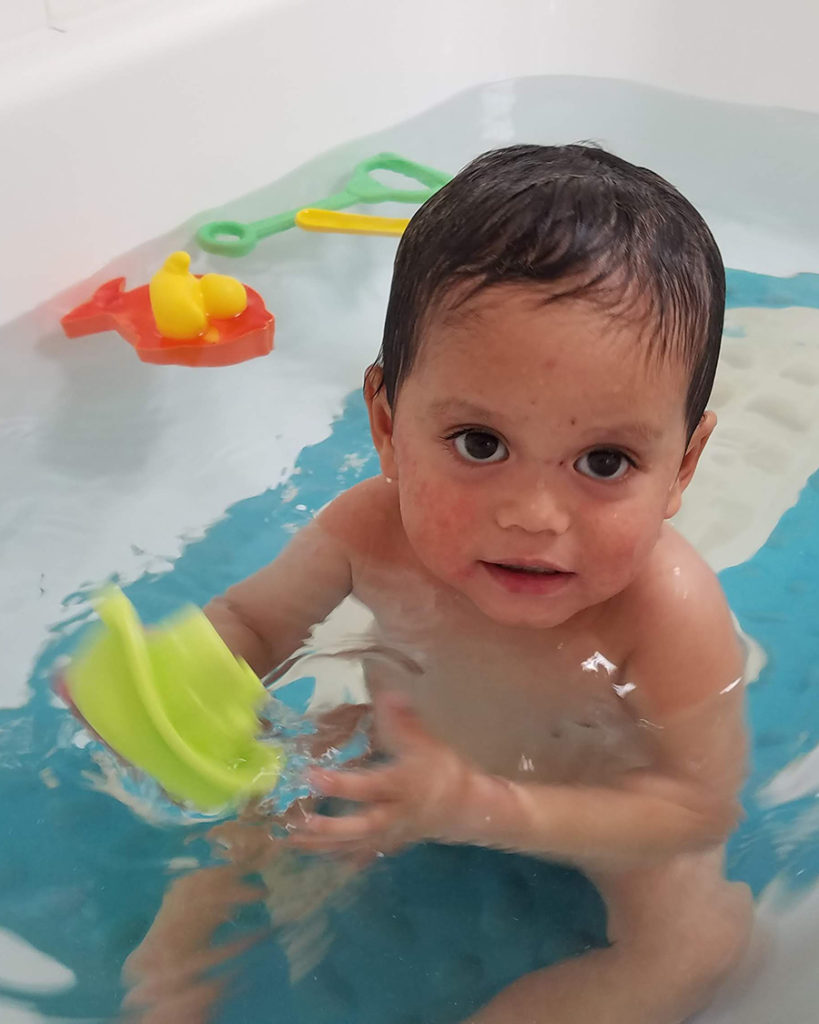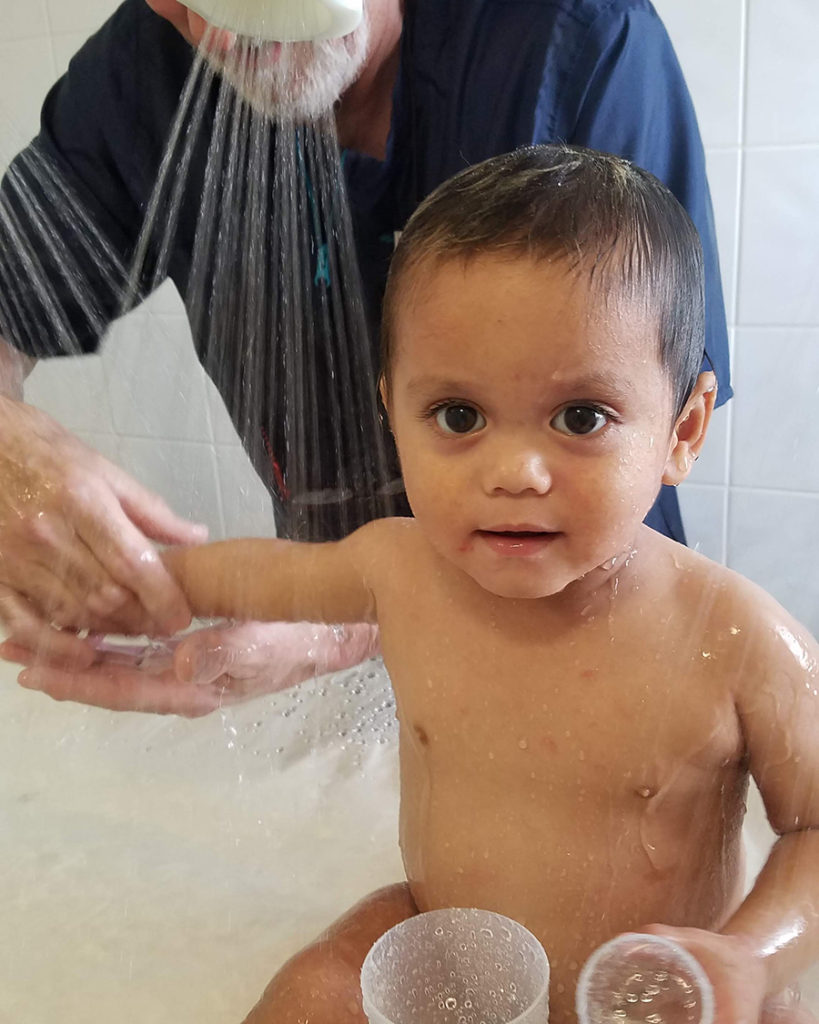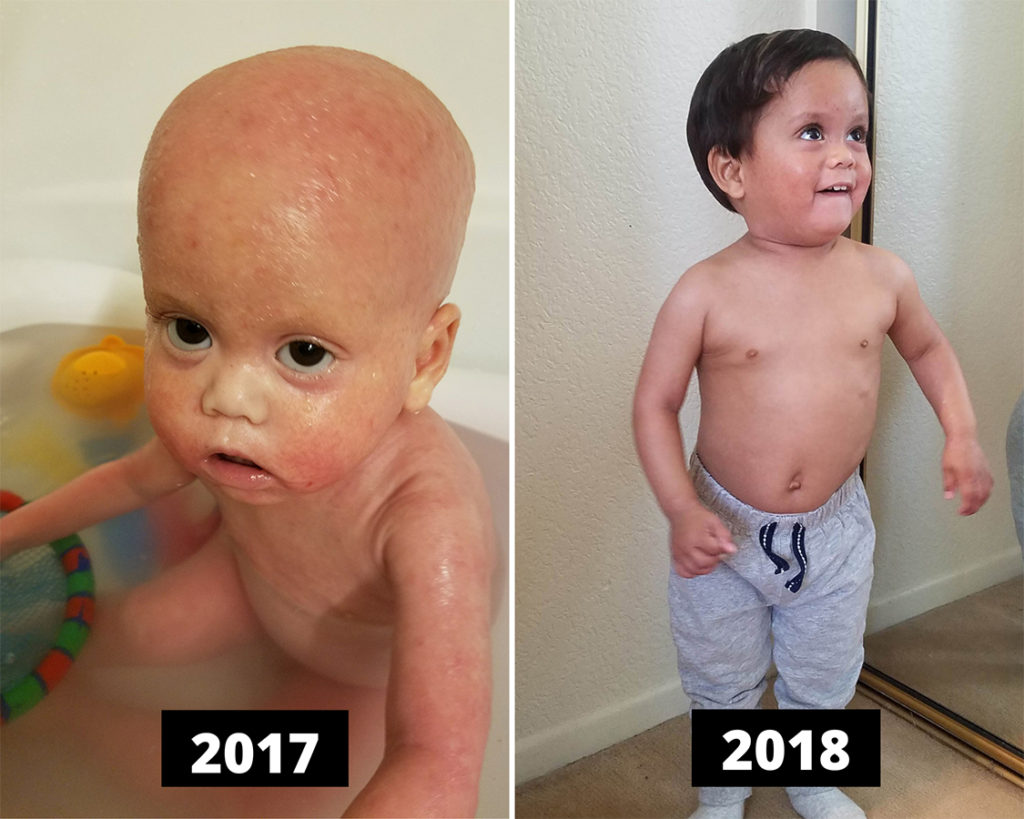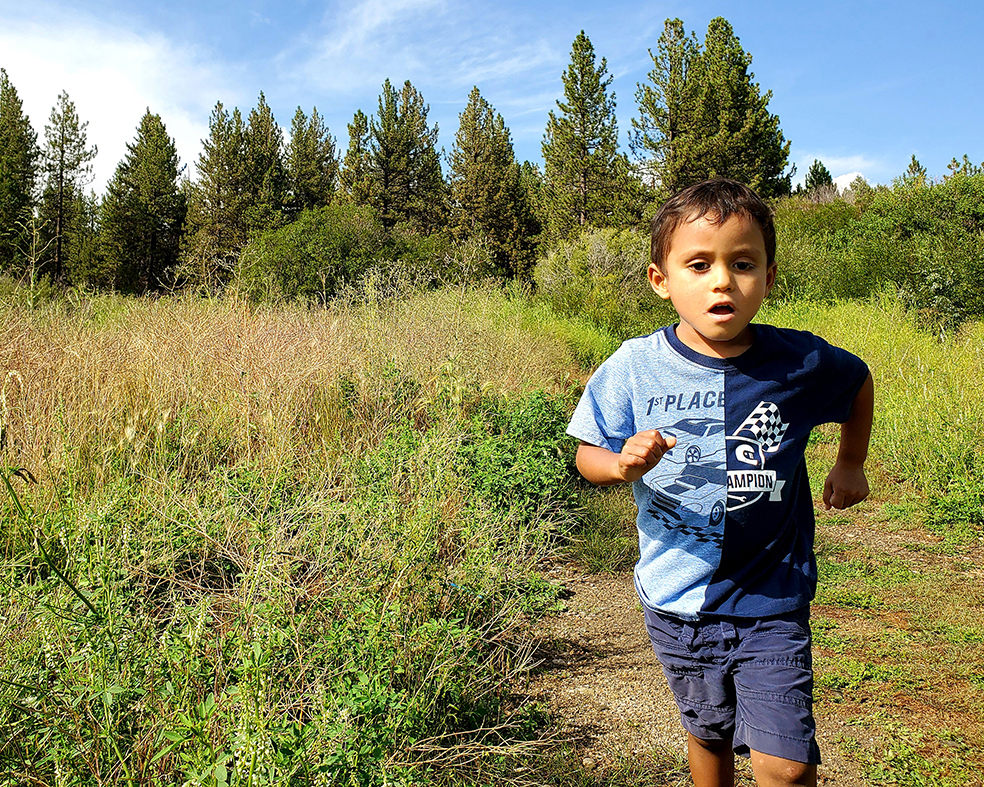Every new mom has high hopes of breastfeeding their infant. We know that breast milk is best for our little ones and as moms we desire to provide what is best. I personally breastfed my boy for three years on a restrictive diet due to all of his food allergies. However, supplementing with this homemade infant formula when he had trouble eating solids was a turning point for our son to gain much needed weight.
Before you try an alterative infant formula, I encourage you to check all breastfeeding resources available to you. It is possible to breastfeed a baby with multiple food allergies when the mom eliminates all allergens from her diet. There are also natural methods you can use to increase milk supply. Two helpful resources are KellyMom.com and Ellen Fisher’s e-book “Breastfeeding”.
Who is this Homemade Infant Formula for?
There are multiple infant formulas on the market, but your baby may not tolerate any of them or you may wish to find a healthier alternative. This homemade infant formula may be just what you’re looking for. It is especially designed for:
- Infants whose moms cannot produce enough breast milk or need to abruptly stop breastfeeding due to a medical procedure.
- Infants with multiple food allergies and mom has a hard time adjusting her diet to continue breastfeeding.
- Infants who struggle to gain weight with breast milk alone.
- Toddlers who, due to health conditions, struggle to eat solid food and depend on formula for nutrition.
I can say with confidence that this formula will be adequate for babies starting at 6 months of age. However, I know of mothers with babies as young as four months old who have exclusively used this formula successfully. Use your own judgment when considering your child’s condition to establish if this formula is a good option for you. My son was two-and-a-half years old when we began supplementing with this formula. He barely ate solid food and this was his main source of nutrition for a year. At one point, he drank 28 oz of this homemade formula a day. Read more about his story here.
The Issues with Store-Bought Formula
Why go through the struggle of making a homemade formula? Why not simplify life and use regular, store-bought formula? After all, it has gone through extensive testing and approval to be certified as baby formula. Let’s take a closer look:
Dairy-based formula
The most commonly prescribed infant formula is dairy-based. There’s a good reason for this. Dairy is high in lactose, a good source of sugar and calories. Dairy also has plenty of fat that babies need to develop. The problem? Many babies, if not most, cannot tolerate dairy. It causes reflux, diarrhea, constipation, eczema, and asthma. Even if an infant may appear to tolerate dairy at first, they may be at a higher risk of developing these symptoms and diseases later.
Standard dairy-based formula is also filled with unhealthy oils such as palm oil, soy oil, and high oleic sunflower oil. Most of these formulas use nonfat milk, which is more processed and requires these refined oils be added. A health-conscious adult would not eat these oils on a regular basis, so why feed them to an infant?
Lastly, dairy formulas lack healthy, living bacteria and nutrients to feed the healthy bacteria. It is well established that a healthy microbiome is vital to health. Good, balanced microbiota live in living plant organisms. Additionally, it is essential to create a gut environment that will grow good bacteria. Some formulas may add probiotics. However, it is important to note that there are many different types of bacteria in our natural environment, but only a few are used in high amount in probiotics. This in itself can cause dysbiosis – an imbalance of the gut microbiota. It is best to trust the microbiome naturally occurring in food and nature.
Soy-based formula
The first alternative formulas prescribed to babies with a dairy allergy or sensitivity are soy-based formulas.
I am a strict vegetarian; I believe in a plant-based diet from infancy. However, I would rather give my child a dairy-based formula than a store-bought, soy formula.
The first ingredient in soy formula is either corn-syrup or brown rice syrup. According to their labels, 54% of the ingredients in soy formula come from these unhealthy sugars. I don’t think I need to go into detail about why this is horrifying. Again, no health-conscious adult would ever eat a diet based on 54% corn-syrup or brown rice syrup. How are we feeding this to infants?
Yes, breastmilk is around 50% sugar, but we cannot compare natural breastmilk sugars to processed corn-syrup or brown-rice syrup.
The ingredients that follow are refined vegetable oils (26%): palm oil, soy oil, coconut oil, and high oleic sunflower oils. So far, 80% of the ingredients don’t sound healthy or nutritious. Then we have the soy protein isolate and added vitamins and minerals.
And as with dairy-based formulas, soy formulas also do not provide healthy bacteria for a strong gut microbiome.
Elemental formula
When a child is allergic to dairy and soy, an elemental formula is prescribed. It is thought that the protein in foods is what causes an allergic response. For this reason, elemental formulas contain broken-down proteins, amino-acids, to make them easier to digest and not cause an allergic reaction.
EleCare and Neocate are the most commonly used formulas for infants with multiple food allergies. Similar to soy formula, elemental formulas contain as the main ingredients: corn-syrup (55%) and refined vegetable oil (24%: comprising palm oil, coconut oil, high oleic sunflower oil, and canola oil or soy oil).
For older children, Neocate Splash is available. The main ingredient here is actually water (85%), followed by maltodextrin (6%), sugar (5%), and refined vegetable oil (high oleic sunflower oil, palm oil, coconut oil, and canola oil). At first sight this looks like a better option, and I think it is. However, maltodextrin is associated with worsening irritable bowel syndrome (IBS), Crohn’s disease, and increasing bad gut bacteria.
Sugars increase bad gut bacteria and these formulas don’t provide any healthy, living bacteria. Most infants and toddlers who have multiple food allergies already have an unhealthy microbiome, autoimmune conditions, and digestive issues. These formulas make the root cause of their disease even worse, making it harder to heal.
My son reacted to all these formulas with vomiting or diarrhea. He did best with Neocate Splash, but at the end it caused him diarrhea as well. Read about how we made the switch to this homemade infant formula here.
Allergy-Friendly Alternative Infant Formula
The homemade infant formula I want to share is plant-based, meaning it has no animal products. It is soy-free, nut-free, corn-free, and gluten-free. Yet, it is very nutritious. (Read the notes at the end for alternative ingredients.)
Fats
Infants and toddlers need more fat than adults to help develop their fast-growing brains. This homemade infant formula provides most of its calories from fats through coconut milk and flax seed oil.
Carbohydrates
Sprouted quinoa and buckwheat are the main source of sugars and carbohydrates in this formula. Coconut also provides a good amount of it.
Protein
For protein, this formula uses one of the most easily digestible legumes – sprouted mung beans.
Importance of Sprouting
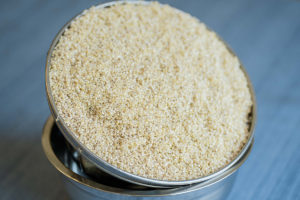 Infants have a sensitive digestive track that has not been fully developed yet. Breastmilk provides easy-to-digest nutrition that is hard to find in solid foods. Toddlers with health conditions also have a sensitive digestive system which requires special consideration.
Infants have a sensitive digestive track that has not been fully developed yet. Breastmilk provides easy-to-digest nutrition that is hard to find in solid foods. Toddlers with health conditions also have a sensitive digestive system which requires special consideration.
Sprouting the quinoa, buckwheat, and mung beans greatly increases their nutritional content and makes these foods easier to digest. Do not skip this step!
Especially if you are dealing with a baby or a chronically-ill toddler, you want to make sure these foods are sprouted. However, do not use sprouts raw! They can be filled with bad bacteria and hard to digest.
Soak the quinoa, buckwheat, and mung beans overnight and let them sprout in a strainer for two days (wash twice a day). Cook the quinoa and buckwheat in water for about 20 to 30 minutes and cook mung beans for 1 hour.
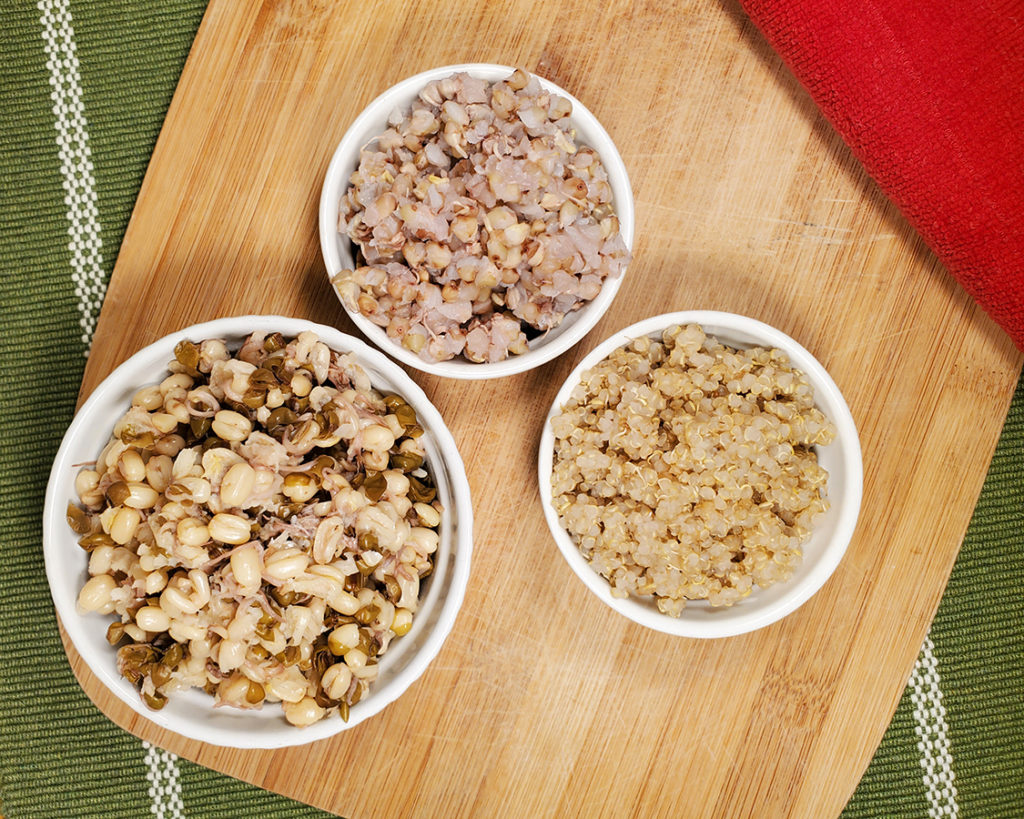
Important Nutritional Notes
Omega 3 is crucial for the development of healthy babies. For this reason, the formula includes 1 tablespoon of flax seed oil. However, flax seed oil can go rancid very fast and it can not be heated. A better option is ground flax seed. When your child is around seven-month- old, you can start mixing ground flax seed with baby food. Our favorite way is in smoothies or with avocado. Start with ½ teaspoon and increase the amount slowly as they grow. At around two-years-old, use 2 teaspoons.
Vitamin B12 is a bacteria needed for healthy brain development and it is not available in plant-based food. You will need to find a good, healthy supplement. We use Global Healing Center B-12. Just a few drops under the tongue once a week will be enough for infants and toddlers. Another great way to get vitamin B12 and other healthy bacteria is to play in the dirt! Take your children to nature or garden with them. Let them get dirty playing in the soil. This is not a reliable method of getting B12, but it has multiple health benefits.
Vitamin D is a hormone essential for the immune system and our overall health. Although Vitamin D is not found in plant foods, we can get it from the sun! Take your infant or toddler out into the sunshine daily, without sunscreen. Let their skin soak in as much sunrays as possible without getting burnt. In the winter, however, you may want to consider supplementing with vitamin D. We use this vitamin D supplement.
Homemade Infant Formula Recipe
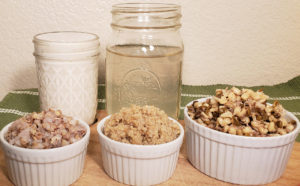 Finally, onto the homemade infant formula recipe. Our son LOVES this formula. It tastes very good—in my opinion, much better tasting than any store-bought formula.
Finally, onto the homemade infant formula recipe. Our son LOVES this formula. It tastes very good—in my opinion, much better tasting than any store-bought formula.
Ingredients:
- 1.5 cups coconut water (12 oz)
- 1 cup full fat canned coconut milk (8 oz)
- ½ cup mung beans (sprouted and cooked)
- ¼ cup quinoa (sprouted and cooked)
- ¼ cup buckwheat (sprouted and cooked)
- 1 tbsp flax seed oil (optional if child eats ground flax seeds)
- 2 dates (optional to sweeten)
Instructions:
Put all ingredients in a high-speed blender. Blend until smooth (about 3 minutes). Strain using a fine mesh strainer. Refrigerate in a glass container for up to 3 days. This recipe will make 26 oz.
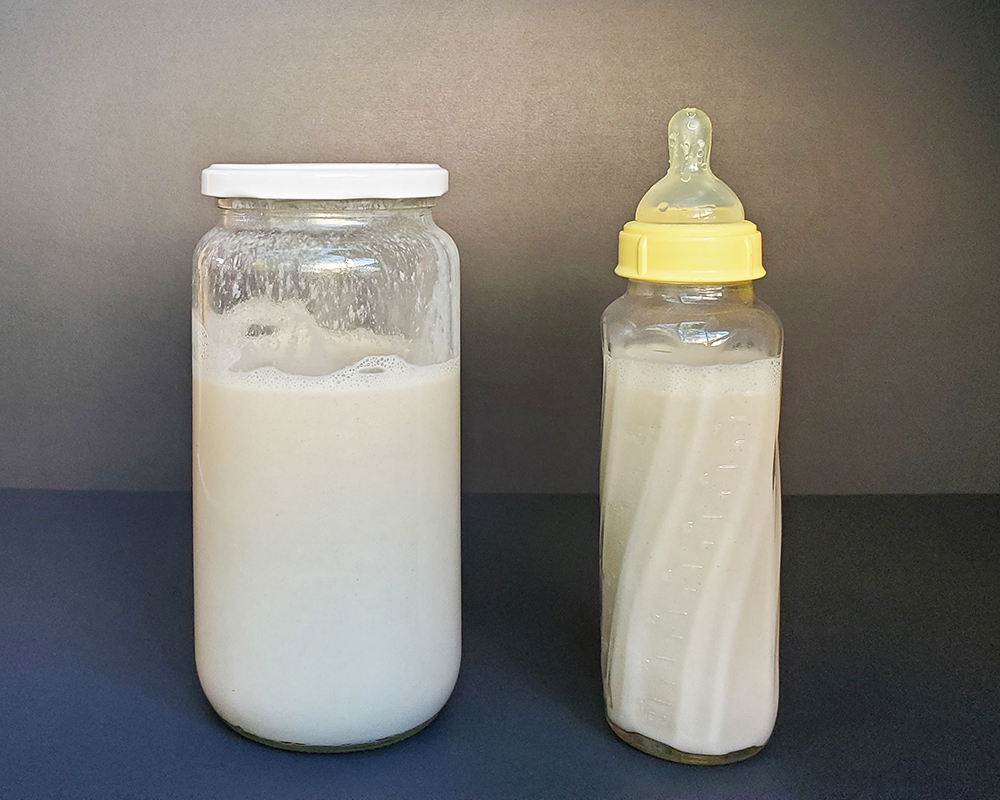
Notes
- You can substitute the coconut water and milk with 1-2 fresh young coconuts (water and meat depending on size). This will avoid the possible toxins found in the can lining. However, we have always used canned coconut milk.
- Make sure the coconut water and coconut milk you buy don’t have any other added ingredients like sugar or preservatives (Guar Gum is ok). It may be hard to find pure coconut milk, but get the best you can. We buy ours at Trader Joe’s.
- Substitutes in case of allergy:
- if your child reacts to mung beans, try sprouted red lentils or sprouted split peas
- if your child reacts to quinoa, try using a pseudo grain called Kaniwa or double the portion of buckwheat
- if your child reacts to buckwheat, try using Kaniwa or double the portion of quinoa
- The dates are really not needed in the recipe but we did use them when we transitioned from regular formula that is very sweet. While our son adjusted to a sugar-free formula, we used 6 dates. Then, we slowly reduced the amount of dates. Now, we don’t use any dates.
- Pro tip: sprout and cook the quinoa, buckwheat, and mung beans in bulk. Then, freeze them in bags to always have at hand. I made this milk daily for over a year. It can get tiring at times but having the ingredients ready to use in the freezer was of huge help.

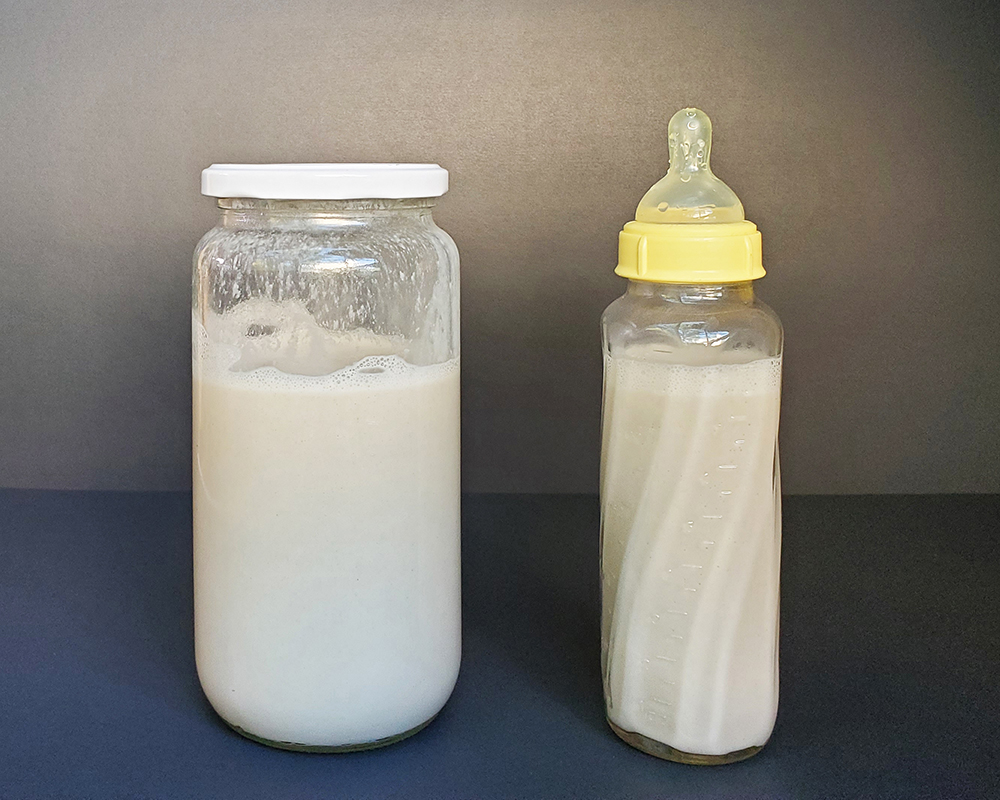

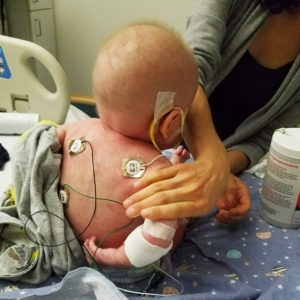 It had been a week since our son was hospitalized against our will (read
It had been a week since our son was hospitalized against our will (read 